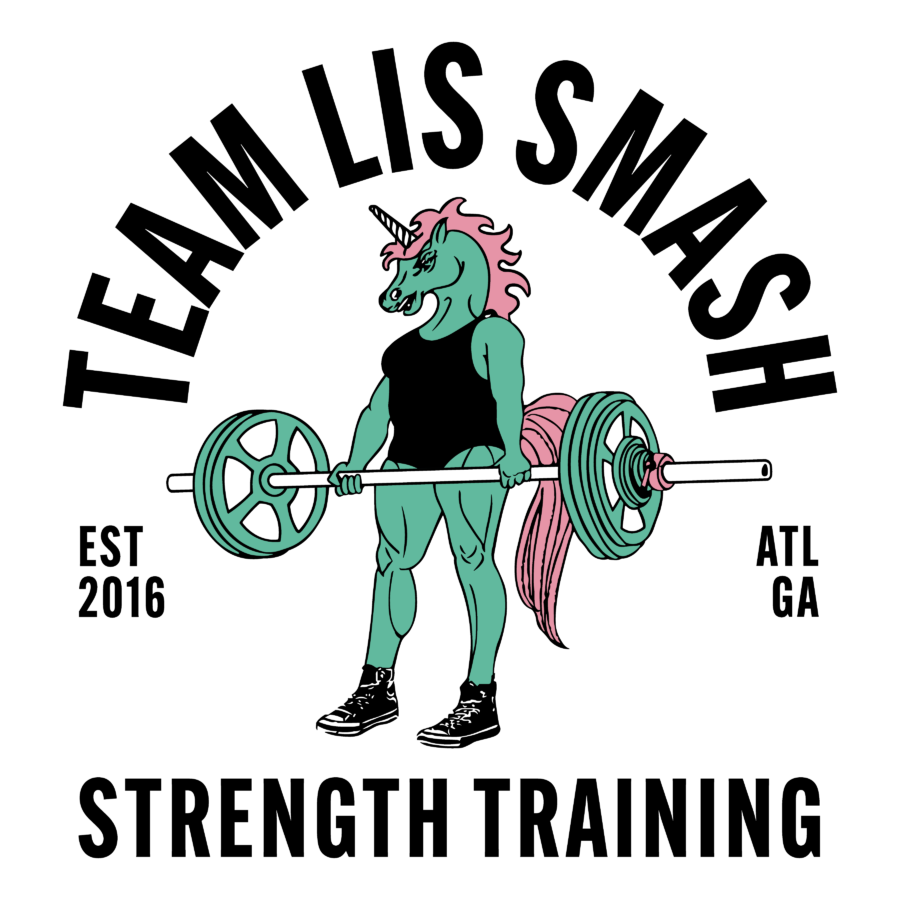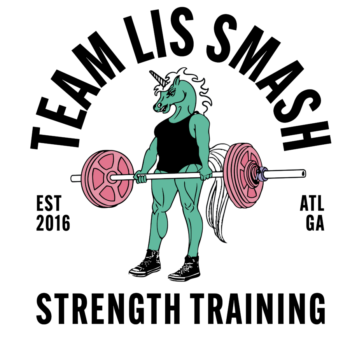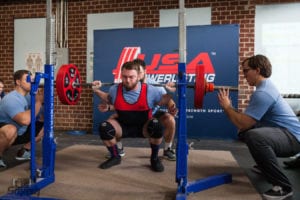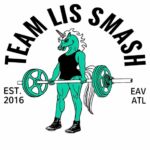So you decided to register for your first powerlifting meet…AWESOME!
November 2019 update: most full powerlifting meets required a singlet. If this is a deal breaker for you, seek out an alternative lifting event, like Squatlanta or Pull for Pride.
Yes, 99% of powerlifting meets require you to wear a singlet. No, there’s not a flattering one on the market.
Singlets are required so we can see your STRONG hips break below parallel when you squat!
It shows the referees your full range of motion in all the lifts. So find one and lift in it once before meet day, just so you know how it feels.
If you’re not super pumped with the idea of lifting in a spandex outfit reminiscent of 1920s bathing suits, seek out an alternative lifting event like Squatlanta or Pull for Pride. Most strong(wo)man events are also singlet-free.
But before I get too off track on equipment and gear, let’s go back to square one.
Your first challenge, after scraping up the coin to compete, is navigating the registration form.
If you haven’t been around the sport of powerlifting for long, there are some confusing questions. I was a first-time lifter once too.
Here are the most commonly confusing questions you’ll answer to get registered:
1. Full Power or Bench Only or Deadlift Only?
Full Power means you will compete in the full powerlifting meet – squat, bench press and deadlift (in that order). You’ll get three attempts to hit your best squat, then three attempts for your best bench press, and then three attempts for your best deadlift.
If you wish to compete only at bench press or only at deadlift, choose that. Then you’ll weigh in with everyone, but jump in with your weight class only when they move into bench press attempts, or deadlift attempts (whichever applies to you).
2. Raw or Equipped –
if you’re a first-time competitor and not sure about the answer, then the answer is RAW. Raw lifting means you’re barely using any gear to assist with the lift. Raw lifters can only wear : singlet + underwear (briefs or thong, no boy shorts/bike shorts/nothing with a leg) + a tshirt (no v-neck or pockets allowed & no compression shirts) + sports bra + shoes (lifters, Chucks, deadlift shoes, whatever shoe you lift in) + for deadlift, knee socks .
: wrist wraps + knee sleeves + belt
Double-check the gear regulations with your federation’s rulebook.
3. Which division do I compete in?
Your registration fee enters you in ONE division. You get to choose which one. Compete in additional divisions if you wish, but there is a charge for it.
These are the typical options:
OPEN: the Open class is just that- OPEN to everyone, ages 14+. You’ll compete against other women ages 14+, in your weight class
NOVICE: if this is your first meet, you can choose to compete in this division against other women who are also competing in their first meet
MASTER*: if you are over 40 (or if you turn 40 this year), you can compete against other women in your age group, within your weight class.
Master I is ages 40-49
Master II: 50-59
Master III: 60-69
Master IV: 70+
YOUTH*: ages 8-13
TEEN/SUB-JUNIOR*: 14-19
JUNIOR*: 20-23
MILITARY: Open to all active duty, guard, reserve, retired military personnel, DOD employees and dependents
POLICE/FIRE: Open to current and retired police officers, correction officers or firefighters, civilly employed or volunteer
*These age groups each have sub-categories. For more details on age groups, check your federation’s rules.
4. What’s my weight class?
HOT TIP – if you’re a female, one perk to lifting in the USPA over the USAPL is that there are MORE weight classes, and they don’t decide you’re a heavyweight just because you weigh 185 pounds. Guess what – 185 pounds is only slightly above the average weight for American women (as of 2016 it was 171 lbs).
Women’s USPA/IPL Weight Classes in kilos and pounds:
44.0 kg (97 lbs), 48.0 kg (106 lbs), 52.0 kg (115 lbs), 56.0 kg (123 lbs), 60.0 kg (132 lbs), 67.5 kg (149 lbs), 75.0 kg (165 lbs), 82.5 kg (182 lbs), 90.0 kg (198 lbs), 90+ kg (over 198 lbs)
Women’s IPF/USAPL Weight Classes in kilos and pounds:
43.0kg (94.75 lbs) class: up to 43.0kg (this class only applies to sub-junior and junior lifters)
47.0kg (103.5 lbs) class: up to 47.0kg
52.0kg (114.75 lbs) class: from 47.01kg up to 52.0kg
57.0kg (125.75 lbs) class: from 52.01kg up to 57.0kg
63.0kg (139 lbs) class: from 57.01kg up to 63.0kg
72.0kg (158.75 lbs) class: from 63.01kg up to 72.0kg
84.0kg (185.25 lbs) class: from 72.01kg up to 84.0kg
84.0+kg (185.25+ lbs) class: from 84.01kg up to unlimited
There are easily 20 more lifting federations within the United States. Lots around the world as well. Check out who hosts the meets in your area and start there.
Weigh ins usually occur either the day before the meet or the morning of. You’ll step on the scale with a same-gendered official who will check the scale after you step on it. Different federations have different rules on whether you can weigh in fully clothed, or if you have to do it in a singlet, or in bra and underwear.
I know there are a number of things about your first powerlifting meet that can be daunting. Hopefully this breaks down the registration form and weigh ins.
Since registration is just the tip of the iceberg, I’ll write another blog soon discussing equipment and gear for meet day.
For answers to other questions, please email me or consult your federation’s rulebook.
For a list of federations that are welcoming to transgender lifters, check out my piece in Barbend here.
Good luck & happy training!
Need help preparing for your first powerlifting meet? Hire Team Lis Smash to help! Schedule an intro session or complete our client interest form now.
~In strength,
Lis Saunders
IG @lissmash




